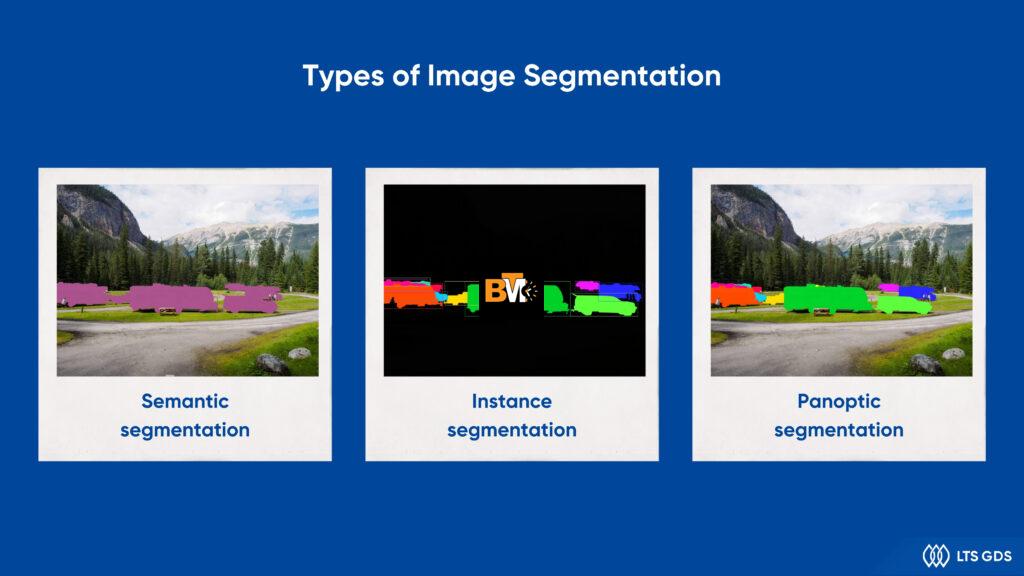In the ever-expanding field of computer vision, image segmentation is a core technique that enables machines to interpret and analyze visual data. It involves breaking down an image into multiple meaningful sections, making it easier for artificial intelligence to recognize objects, patterns, and structures. For a deeper understanding of types of segmentation in image processing, it’s essential to explore how different segmentation methods contribute to AI-driven solutions across industries.
The Role of Image Segmentation in AI
Image segmentation serves as a foundation for various AI applications by allowing models to extract critical information from images. This technology is used in autonomous vehicles to differentiate between pedestrians, traffic signs, and road surfaces. In medical imaging, it helps isolate tumors or abnormalities in MRI and CT scans, improving diagnosis accuracy. Industrial automation also benefits from segmentation, as it enables defect detection and quality control in manufacturing processes.
By precisely segmenting images, AI models can focus on individual objects, reducing noise and enhancing decision-making capabilities. The accuracy of these models depends on how effectively images are labeled, which is why high-quality data annotation is essential for training AI algorithms.
Different Approaches to Image Segmentation
Semantic Segmentation
Semantic segmentation assigns a class label to every pixel in an image. This approach is widely used in applications such as autonomous driving and urban planning, where identifying different elements like roads, buildings, and vehicles is crucial. However, while it can distinguish object categories, it does not differentiate between individual instances of the same object.
Instance Segmentation
Instance segmentation builds upon semantic segmentation by identifying and labeling each individual object separately. For example, if there are multiple people in an image, instance segmentation ensures that each person is uniquely identified. This technique is commonly used in security surveillance and retail automation, where distinguishing between multiple objects of the same category is necessary.
Panoptic Segmentation
Panoptic segmentation merges semantic and instance segmentation, providing a holistic view of an image. It ensures that both general scene elements and individual objects are accurately classified. This technique is especially valuable in robotics and smart city management, where AI systems must interpret complex environments with precision.
Threshold-Based Segmentation
A simple yet effective technique, threshold-based segmentation divides an image based on pixel intensity. It is widely used in biomedical imaging, where distinguishing between different tissue types or detecting anomalies in scans is critical. This method works well for high-contrast images but may struggle with more complex visual data.
Edge Detection Segmentation
Edge-based segmentation focuses on identifying object boundaries by detecting changes in pixel intensity. This method is commonly applied in object tracking systems, video surveillance, and handwriting recognition, where accurate contour detection is required.
Region-Based Segmentation
Region-based segmentation groups pixels with similar attributes, such as color and texture, into distinct sections. This technique is widely used in satellite image analysis, where it helps classify different terrain types like forests, water bodies, and urban structures.
Applications Across Industries
The ability to segment images accurately has led to groundbreaking advancements in multiple industries:
- Healthcare: AI-powered segmentation is transforming medical diagnostics by allowing doctors to analyze radiology images with greater precision.
- Autonomous Vehicles: Self-driving cars rely on segmentation to detect and respond to road conditions, obstacles, and traffic signs.
- Retail & E-commerce: Automated checkout systems and product recognition tools leverage segmentation to improve shopping experiences.
- Agriculture: AI-driven segmentation helps farmers monitor crop health and detect diseases through aerial imaging.
How Mindy Support Enhances Image Segmentation
Achieving high-quality image segmentation requires accurate data annotation, a process that ensures AI models are trained with well-labeled datasets. Mindy Support is a leader in data annotation outsourcing, providing expert solutions for companies working with AI-driven applications. Their team specializes in pixel-perfect annotation, ensuring that training data meets the highest standards of accuracy.
Conclusion
The different types of segmentation in image processing play a crucial role in advancing AI capabilities across multiple sectors. From semantic and instance segmentation to region-based and edge detection methods, each approach contributes to improving how AI understands and interacts with visual data. As technology continues to evolve, precise image segmentation will remain a key component in developing smarter, more efficient AI systems.







Leave a Reply